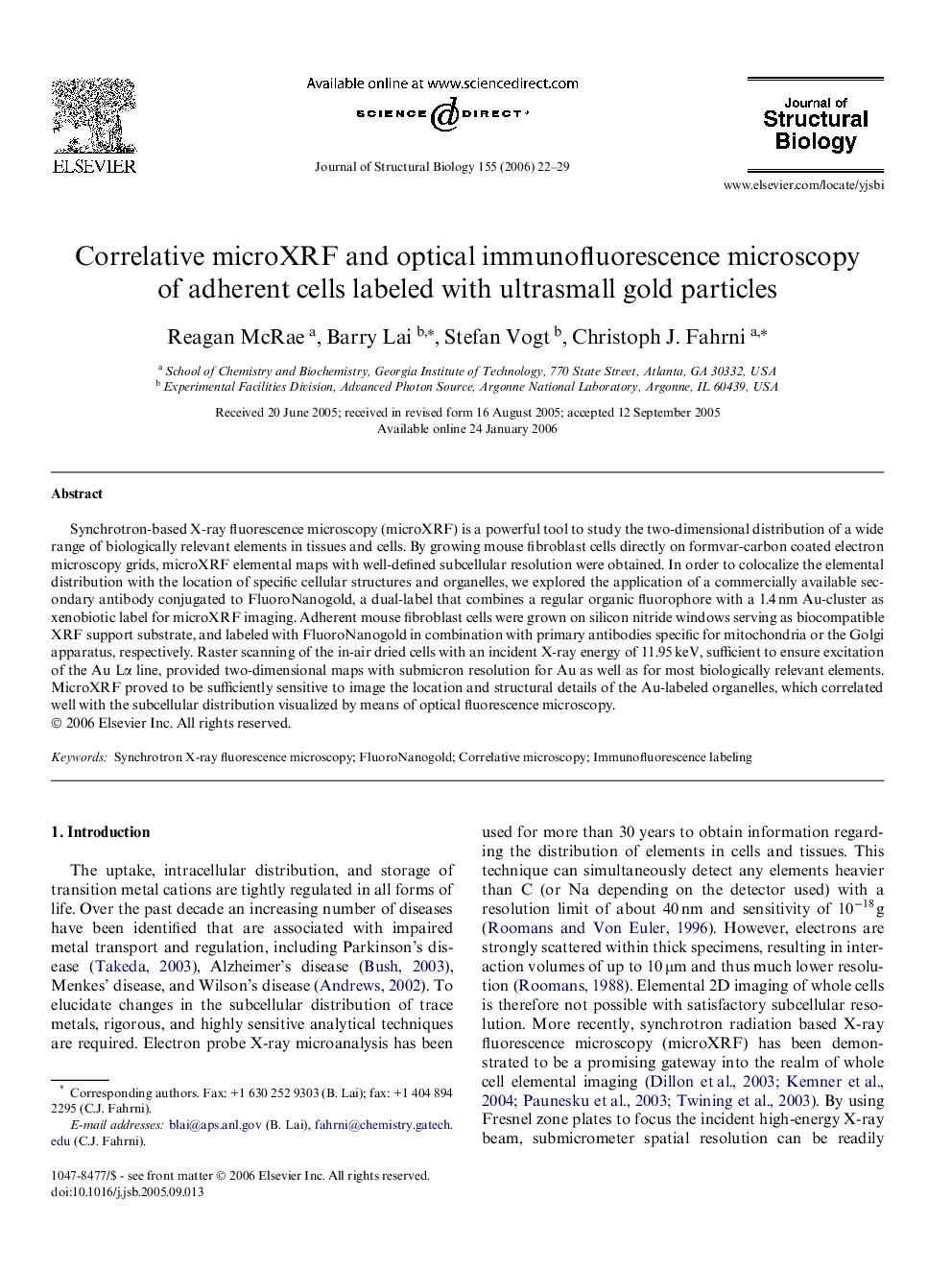| Article ID | Journal | Published Year | Pages | File Type |
|---|---|---|---|---|
| 2829411 | Journal of Structural Biology | 2006 | 8 Pages |
Synchrotron-based X-ray fluorescence microscopy (microXRF) is a powerful tool to study the two-dimensional distribution of a wide range of biologically relevant elements in tissues and cells. By growing mouse fibroblast cells directly on formvar-carbon coated electron microscopy grids, microXRF elemental maps with well-defined subcellular resolution were obtained. In order to colocalize the elemental distribution with the location of specific cellular structures and organelles, we explored the application of a commercially available secondary antibody conjugated to FluoroNanogold, a dual-label that combines a regular organic fluorophore with a 1.4 nm Au-cluster as xenobiotic label for microXRF imaging. Adherent mouse fibroblast cells were grown on silicon nitride windows serving as biocompatible XRF support substrate, and labeled with FluoroNanogold in combination with primary antibodies specific for mitochondria or the Golgi apparatus, respectively. Raster scanning of the in-air dried cells with an incident X-ray energy of 11.95 keV, sufficient to ensure excitation of the Au Lα line, provided two-dimensional maps with submicron resolution for Au as well as for most biologically relevant elements. MicroXRF proved to be sufficiently sensitive to image the location and structural details of the Au-labeled organelles, which correlated well with the subcellular distribution visualized by means of optical fluorescence microscopy.
